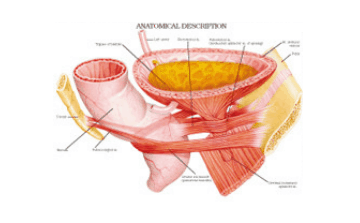The system for eliminating waste and excess water in the body is called the urinary system. It consists of the bladder, the kidneys, and the urethra. Kidneys purify the blood by eradicating waste and excess water to form urine, which subsequently travels down the ureters and is kept in the bladder until it is ready to be passed through the urethra, by the process called urination.
Urinary tract infections are among the second most frequent infections happening within the human body. More women than men seem to suffer from UTIs. The most likely reason for this is because the urethra is located right next to the anus, so it is easier for bacteria from the anus to reach the urethra in women. Women also have a shorter urethra, which allows the quick access of bacteria to the bladder.
 Urinary tract infections are caused by microorganisms, like bacteria, destroying the body’s resistances in the urinary tract. UTIs can have different names denoting to the different parts of the urinary tract system that they affect:
Urinary tract infections are caused by microorganisms, like bacteria, destroying the body’s resistances in the urinary tract. UTIs can have different names denoting to the different parts of the urinary tract system that they affect:
- Bladder infection = Cystitis
- Urethra infection = Urethritis
- Kidney infection = Pyelonephritis
Intercourse can also lead bacteria into the urinary tract system.
Common Symptoms of a UTI
UTI symptoms depend on the region affected in the urinary tract system. The preliminary broad-spectrum symptoms include a burning feeling during urination, a recurrent or forceful urge to urinate; as well as cloudy, bloody or strong smelling urine. The symptoms may also include pain, nausea, and vomiting. Sometimes there is a pain or pressure in your back or lower abdomen as well.
Cystitis Symptoms
 The lower urinary tract consists of the bladder and the urethra. Infection in the lower urinary tract can affect the bladder, which is called cystitis. If the infection affects only the urethra, it is called urethritis. Not everybody can identify noticeable symptoms of a urinary tract infection, and that way, the infection may progress quickly. Urethritis might lead to cystitis when the bacteria extends to the bladder. The most common symptoms observed are burning when urinating and the frequent urge to urinate. These indications may differ from severe to mild, and in healthy women, could last for around six days. It is also possible to experience some pain in the pelvic area. It is possible to also experience a fever, but unlikely.
The lower urinary tract consists of the bladder and the urethra. Infection in the lower urinary tract can affect the bladder, which is called cystitis. If the infection affects only the urethra, it is called urethritis. Not everybody can identify noticeable symptoms of a urinary tract infection, and that way, the infection may progress quickly. Urethritis might lead to cystitis when the bacteria extends to the bladder. The most common symptoms observed are burning when urinating and the frequent urge to urinate. These indications may differ from severe to mild, and in healthy women, could last for around six days. It is also possible to experience some pain in the pelvic area. It is possible to also experience a fever, but unlikely.
Pyelonephritis Symptoms
The upper urinary tract is made up of the kidneys and ureters. Pyelonephritis is when the infection in the upper urinary tract affects the kidneys, which can cause nausea, vomiting, chills and fever. People suffering from pyelonephritis, or an upper urinary tract infection, may experience discomfort in the upper abdomen, sides and back, in addition to the typical symptoms of a lower urinary tract infection. The urine may appear bloody or contain visible pus in the urine in rare cases.











